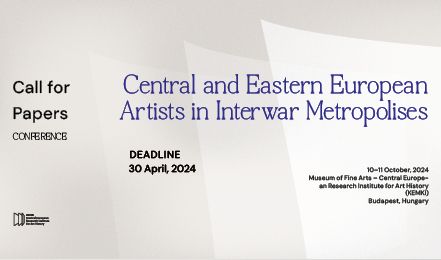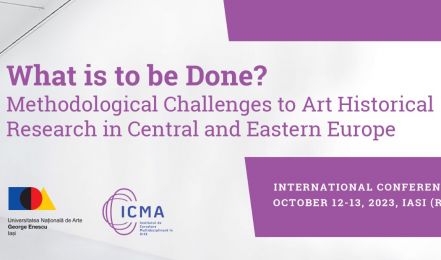‘Eastern Europe’
CFP: Central and Eastern European Artists in Interwar Metropolises
The motivations for the relocation of Central and Eastern European visual artists to urban centres in the interwar period often followed patterns: those with formal art training included travel as part of their curriculum, financed by various funds or grants; changes in political regimes forced others to leave their home countries for shorter or longer periods; and most enjoyed the help of personal, professional or political networks while …
Sešit/Notebook for Art, Theory and Related Zones – Resonances különszám
… – Marina Dmitrieva (eds.), Universal – International – Global. Art Historiographies of Socialist Eastern Europe by Andrea Bátorová.
What is to be Done? Methodological Challenges to Art Historical Research in Central and Eastern Europe
… UNAGE, Iasi, Romania. In collaboration with: Academy of Fine Arts, Prague, KEMKI-Central European Research Institute for Art History, Budapest and the University of Lodz. CONFERENCE PROGRAM Thursday, October 12 9.45 – 10.00 – Introduction 10.00 – 12.00 Panel 1: Revisiting socialist art: state-supported institutions, exhibitions, and cultural diplomacy Tomasz Zaluski – Introduction : In Search of New Agendas. Potential Histories of Art & Modernization …
Konferenciafelhívás
Methodological Challenges to Art Historical Research in Central and Eastern Europe The conference organizers welcome proposals which reevaluate art historical methodologies employed in the region so far and address urgent research topics, methodologies, and challenges to the discipline as a result of the transformations outlined above. We welcome contributions for the following panel topics, covering the period from 1945 to the present: - Revisiting …
TÓTalJOY díjátadó 2023/ Süveges Rita
Endre Tót and the Museum of Fine Arts – Central European Research Institute for Art History (KEMKI) established a prize for contemporary artists in 2021. The TÓTalJOY Prize, with a total prize of €10 000, is open to artists with research-based art projects. This year's winner is Rita Süveges, who will give a short presentation of her project plan for the TÓTalJOY Prize, entitled Shout to the Cloud! , after the award ceremony. The …




